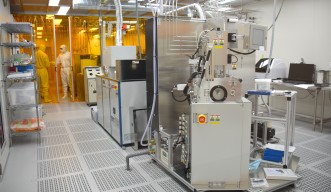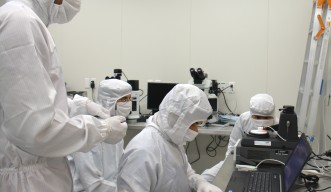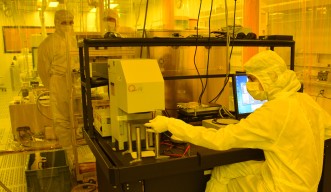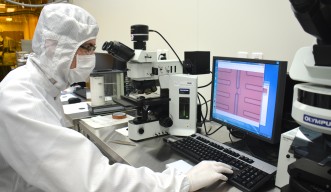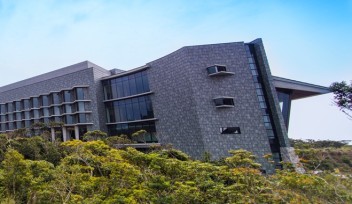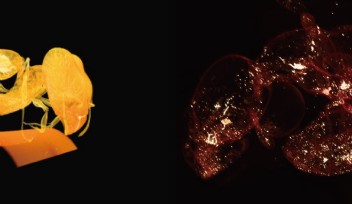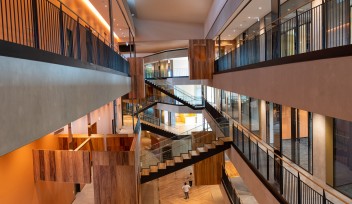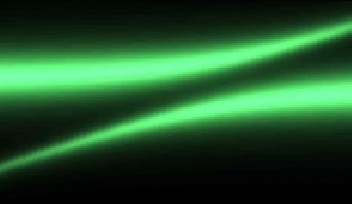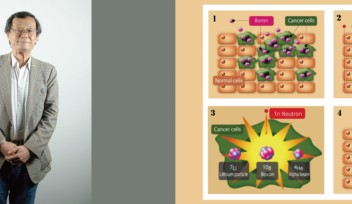Behind the Curtain
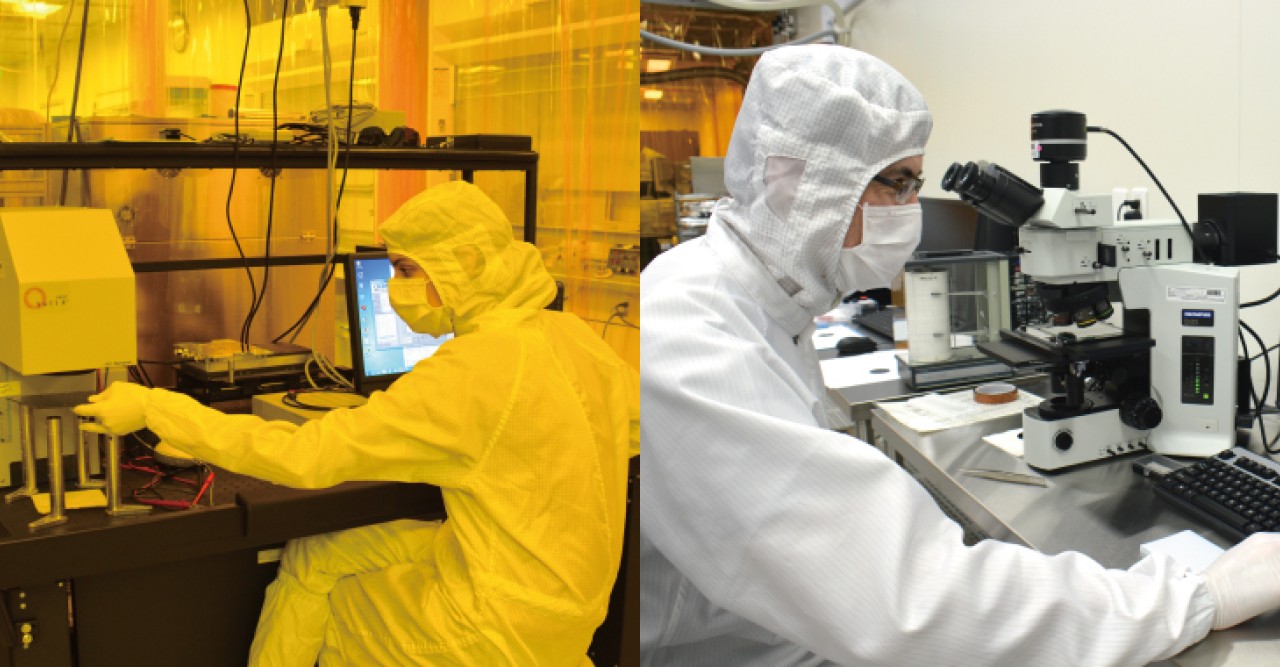
In a space draped with yellow curtains, a researcher dressed all in white, with only his eyes showing, is staring at a small plate, the size of a person’s fingernail. The location is a cleanroom in OIST’s Laboratory 2. Here, dust in the air is removed to ensure a controlled environment suitable for a wide range of research such as new solar cell materials and on quantum computers that will outperform today’s supercomputers.
The cleanliness level of cleanrooms is rated on the number of dust particles per cubic foot of air (1 foot3 = 0.0283 meter3). OIST’s cleanroom has two sections, each designed to meet a strict standard. One section has fewer than 100 particles, larger than 0.5 µm in size, and the other achieves fewer than 1,000 particles of the same size, which are level 100 and 1000 respectively. To reduce the number of dust particles, clean air is supplied through a filter from the ceiling and the air is exhausted through the floor. People entering the room are required to don a full cleanroom suit, with mask, gloves, hood, and boots to prevent particulate contamination.
A wide range of advanced devices has been installed in the cleanroom in the past 18 months. These include electron beam vapor deposition equipment and a vacuum sputter deposition system. These devices are used for creating thin-films of metals, organic materials on the surface of silicon wafers, or glass substrates, to produce part for electronic devices. Other instruments that have been installed are a lithography system, for creating fine electronic circuits using printing techniques, microscopes, and various analyzers.
Researchers of the Energy Materials and Surface Sciences Unit are heavy users of the cleanroom, developing solar cells made of organic materials. One of the things that they are working to produce is solar cells that are inexpensive and flexible enough to be used on nearly every solid surface from opaque and flat walls, to transparent and curved windows. Such cells are created by coating a plastic sheet with an organic semiconductor solution. Test cells using different materials and processes are fabricated to produce cells with high power conversion efficiency. This must be done in a dust-free environment to prevent dust from contaminating the thin film, which would short circuit or otherwise impair the device. Because the equipment in the cleanroom enables every step in the process, from creation of solar cells to testing them, members of the Unit have almost become residents of the cleanroom.
Alexander Badrutdinov, who also recently took up residence there, is from the Quantum Dynamics Unit. While quantum mechanics scientists around the world are taking various approaches to build quantum computers experimentally, the Quantum Dynamics Unit focuses on electrons on liquid helium. “To make a quantum computer, first of all you need a quantum system suitable for it. Our quantum bit will be an electron on the surface of liquid helium, which is one of less well-known systems. In order to achieve this, we first need to separate the single electron and detect it.” explains Badrutdinov. A quantum bit is a unit of information used in quantum computer. He uses the lithography system in the cleanroom to align electrodes of 1 µm on the substrate to create an element that will capture an electron. Though there is still a long way to go before actual development of a quantum computer, new technologies from which future computers could be built, may come from this cleanroom.
Supporting these projects is Laszlo Szikszai, a technician from Hungary, who manages the cleanroom. In order to care for the advanced equipment, he commits himself to collecting the latest information from OIST researchers and other institutes. “There is a lot to learn, and that is fun,” he says. Szikszai is now working to develop equipment information for cleanroom users to further enhance the utility of the cleanroom.
Specialty
For press enquiries:
Press Inquiry Form










